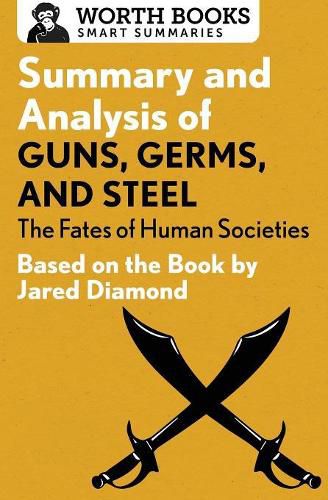Readings Newsletter
Become a Readings Member to make your shopping experience even easier.
Sign in or sign up for free!






This title is printed to order. This book may have been self-published. If so, we cannot guarantee the quality of the content. In the main most books will have gone through the editing process however some may not. We therefore suggest that you be aware of this before ordering this book. If in doubt check either the author or publisher’s details as we are unable to accept any returns unless they are faulty. Please contact us if you have any questions.
So much to read, so little time? This brief overview of Guns, Germs, and Steel tells you what you need to know–before or after you read Jared Diamond’s book.
Crafted and edited with care, Worth Books set the standard for quality and give you the tools you need to be a well-informed reader.
This short summary and analysis of Guns, Germs, and Steel by Jared Diamond includes:
Historical context Chapter-by-chapter summaries Detailed timeline of key events Important quotes Fascinating trivia Glossary of terms Supporting material to enhance your understanding of the original work
About Guns, Germs, and Steel by Jared Diamond:
Professor Jared Diamond’s informative and fascinating Pulitzer Prize-winning Guns, Germs, and Steel explores a historic question: Why were the Eurasian peoples able to dominate those from other lands?
Diamond argues that it was ecology and geography–not race–that shaped the modern world. Societies that developed in regions with fertile land for farming and that had domesticable plants and animals were able to progress more quickly, thereby creating the tools to conquer preliterate cultures.
Drawing on a variety of disciplines–from linguistics, genetics, and epidemiology to biology, anthropology, and technology–Guns, Germs, and Steel offers an eloquently argued view of the development of human societies.
The summary and analysis in this book are intended to complement your reading experience and bring you closer to a great work of nonfiction.
$9.00 standard shipping within Australia
FREE standard shipping within Australia for orders over $100.00
Express & International shipping calculated at checkout
This title is printed to order. This book may have been self-published. If so, we cannot guarantee the quality of the content. In the main most books will have gone through the editing process however some may not. We therefore suggest that you be aware of this before ordering this book. If in doubt check either the author or publisher’s details as we are unable to accept any returns unless they are faulty. Please contact us if you have any questions.
So much to read, so little time? This brief overview of Guns, Germs, and Steel tells you what you need to know–before or after you read Jared Diamond’s book.
Crafted and edited with care, Worth Books set the standard for quality and give you the tools you need to be a well-informed reader.
This short summary and analysis of Guns, Germs, and Steel by Jared Diamond includes:
Historical context Chapter-by-chapter summaries Detailed timeline of key events Important quotes Fascinating trivia Glossary of terms Supporting material to enhance your understanding of the original work
About Guns, Germs, and Steel by Jared Diamond:
Professor Jared Diamond’s informative and fascinating Pulitzer Prize-winning Guns, Germs, and Steel explores a historic question: Why were the Eurasian peoples able to dominate those from other lands?
Diamond argues that it was ecology and geography–not race–that shaped the modern world. Societies that developed in regions with fertile land for farming and that had domesticable plants and animals were able to progress more quickly, thereby creating the tools to conquer preliterate cultures.
Drawing on a variety of disciplines–from linguistics, genetics, and epidemiology to biology, anthropology, and technology–Guns, Germs, and Steel offers an eloquently argued view of the development of human societies.
The summary and analysis in this book are intended to complement your reading experience and bring you closer to a great work of nonfiction.